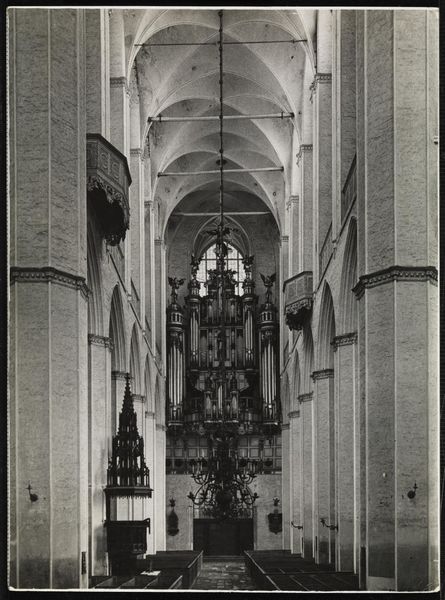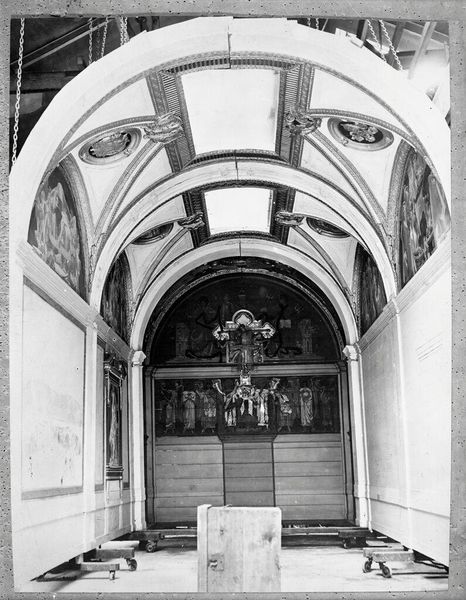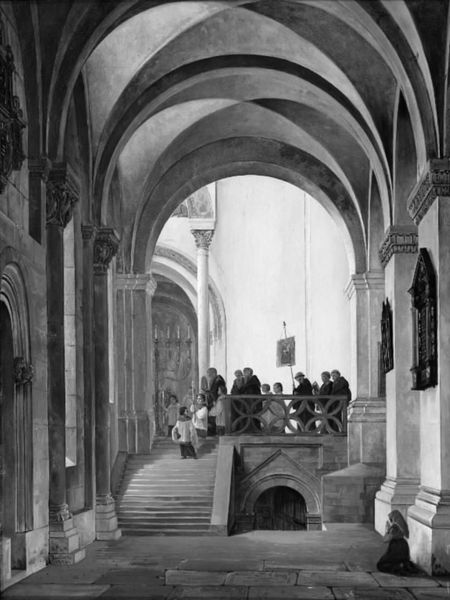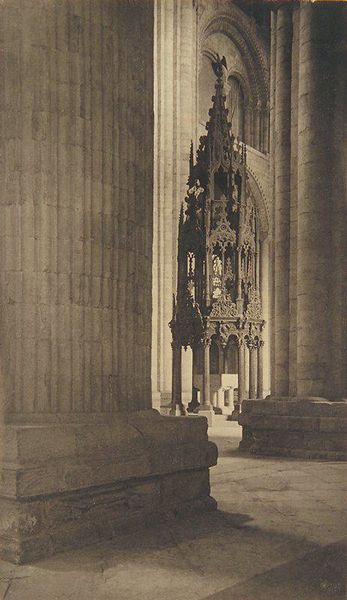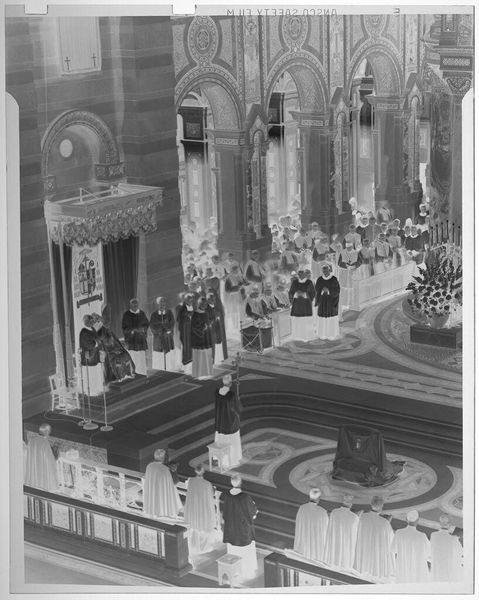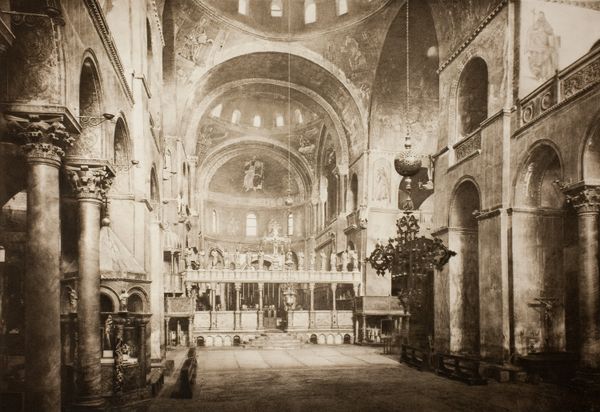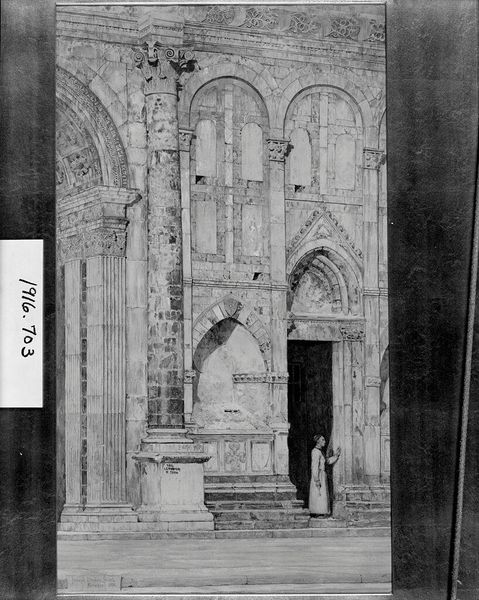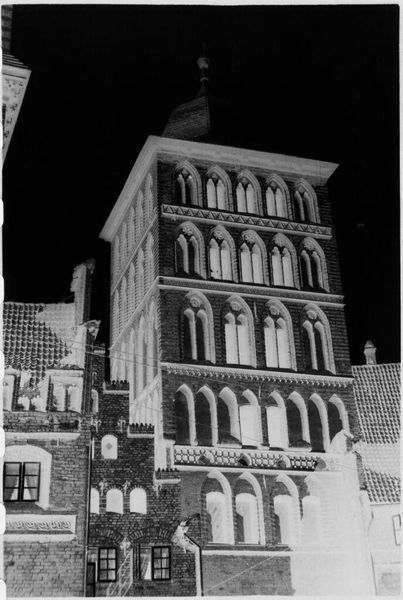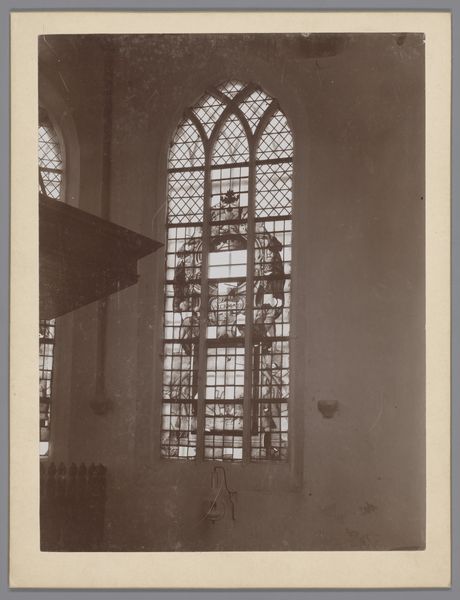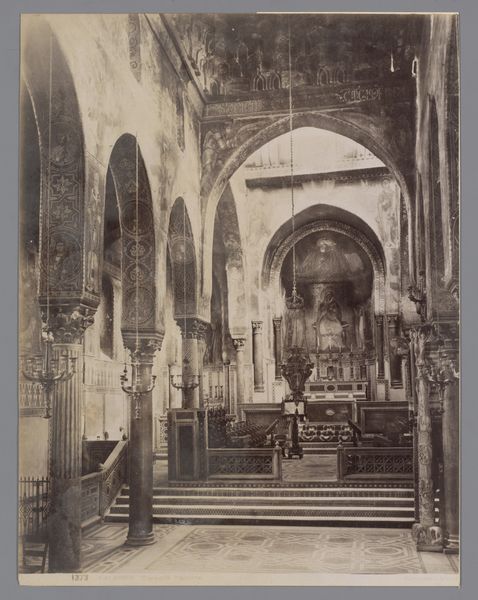
Interior of the Oude Kerk, Amsterdam, during a Sermon 1678 - 1682
0:00
0:00
painting, oil-paint, architecture
#
baroque
#
painting
#
oil-paint
#
sculpture
#
historic architecture
#
genre-painting
#
architecture
#
realism
Dimensions: 70.5 cm (height) x 57.5 cm (width) (Netto), 87.5 cm (height) x 75.5 cm (width) x 6.3 cm (depth) (Brutto)
Editor: This is "Interior of the Oude Kerk, Amsterdam, during a Sermon" painted by Emanuel de Witte around 1678-1682 using oil paint. It’s currently held at the Statens Museum for Kunst. I am really struck by how much everyday life De Witte captures in what seems like a formal space. What stands out to you? Curator: Well, I see the church not just as a site of religious devotion, but also as a social arena. De Witte, painting during the Dutch Golden Age, invites us to consider the complex intersection of religion, commerce, and civic life. Notice the variety of figures. Editor: Yes, it feels less about piety and more about… people. Curator: Exactly! Consider the role of women and children within this space. Are they simply passive observers, or are they actively shaping the social dynamic of the church? What can their presence tell us about the changing role of women within Dutch society at the time? Editor: That’s fascinating. It almost feels like a silent rebellion, that they occupy this traditionally male space, adding their own layer to the scene. Curator: It’s a negotiation, certainly. Now, look at how wealth and class are subtly displayed. Can we read these markers in their clothes? Their posture? It all contributes to a bigger picture. Editor: It changes how I see genre painting generally—it’s not just a snapshot, but a coded commentary. Curator: Precisely. By studying such genre paintings, we glean invaluable insights into the lived experiences and the intricate power dynamics of 17th-century Dutch society. Hopefully you agree. Editor: I absolutely do. It shows how relevant art history can be for discussing societal and gender topics that impact us today.
Comments
No comments
Be the first to comment and join the conversation on the ultimate creative platform.

